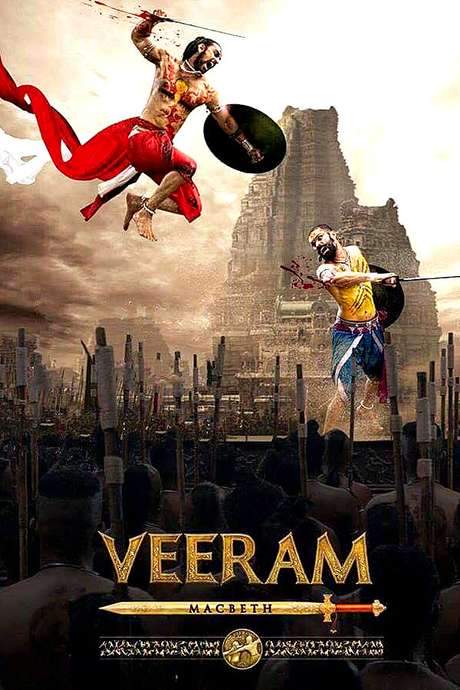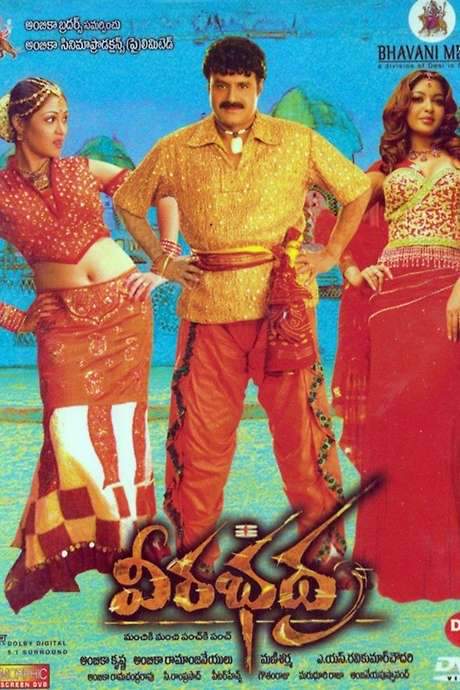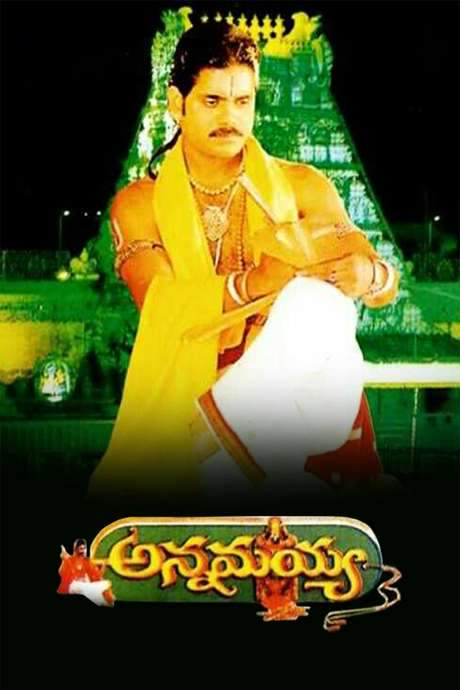
Srimadvirat Veerabrahmendra Swami Charitra
Year: 1984
Runtime: 173 mins
Language: Telugu
The film chronicles the life of the 17th‑century saint and astrologer Pothuluri Veerabrahmam, portrayed by N. T. Rama Rao. It opens with brief dramatizations of the early lives of Gautama Buddha, philosopher‑theologian Ramanuja, Advaita scholar Adi Shankara and poet Vemana, all also performed by NTR, establishing a spiritual backdrop before focusing on Veerabrahmam’s teachings and legacy.
Warning: spoilers below!
Haven’t seen Srimadvirat Veerabrahmendra Swami Charitra yet? This summary contains major spoilers. Bookmark the page, watch the movie, and come back for the full breakdown. If you're ready, scroll on and relive the story!
Srimadvirat Veerabrahmendra Swami Charitra (1984) – Full Plot Summary & Ending Explained
Read the complete plot breakdown of Srimadvirat Veerabrahmendra Swami Charitra (1984), including all key story events, major twists, and the ending explained in detail. Discover what really happened—and what it all means.
The film opens by briefly sketching the lives of spiritual and philosophical figures—Gautama Buddha, Ramanuja, Adi Shankara, and Vemana—to set a grand, timeless frame for the story that follows. In this mythic tapestry, Sri Potuluri Veerabrahmam Swamy—the man who would come to be known as Veerabrahmam—enters as a destined force. His birth is marked by tragedy: his parents Paripurnacharya and Prakrutamba die in a flash, leaving him to be raised by foster parents Veerabhojacharya and Veerapapamamba. As a child, he grows under their care, and at the age of ten, his foster father also passes away, pushing him onto a path of learning that begins with a hard lesson from his mother about life, the journey of birth, and how debts are settled.
As the years roll by, Veerabrahmam becomes a wandering figure who eventually reaches the town of Banaganapalli and, in a modest turn of fate, becomes a cowherd under Achamma. His daily life is simple and protective, his staff acting as a shield against trouble, and his generosity quietly broadens the village’s sense of community. It is here that Achamma discovers Veerabrahmam sketching a scripture he calls Kaalagnynam, a prophetic work proclaiming what the country will endure after five millennia of the “Kaliyuga.” The prophecy foresees the dissolution of the caste system, the British Empire’s grip on the land, the birth of Gandhi, and the awakening of modern women.
Veerabrahmam chooses to bury that scripture, concealing it beneath a tamarind plant, and declares that at the end of Kaliyuga his arrival will herald the reign of righteousness as Veera Bhoga Vasanta Rayalu. From that moment, his journey continues as he redefines his own identity, moving forward as a man who blends the life of a craftsman with a preacher’s compassion. He becomes a blacksmith, builds a home, and practices daily almsgiving that transcends caste boundaries. He wed a benevolent woman, Govindamma, and the couple are blessed with children. Yet not everyone approves of his unorthodox path; the sly Karanam and Munasab in the village scheme against him, urging him to perform public worship and to shape a chariot within a single night. Displaying a remarkable blend of spiritual power and resolve, Veerabrahmam completes the feat and teaches a harsh lesson to his adversaries through deeds that expose their misdeeds.
Into this intimate, village world steps Sayyad / Siddayya, a young, ambitious Muslim man who falls in love with his maternal uncle’s daughter, Raziya Raziya. The elders seal their betrothal, but Sayyad’s heart and gaze are troubled by the sight of many disabled people, a sign that something deeper guides his journey. Veerabrahmam offers him a transformative invitation: he explains the meaning of life, and Sayyad forsakes his previous life to become Veerabrahmam’s devoted disciple, earning the name Siddha. The first time Sayyad is introduced as a disciple, Sayyad / Siddayya is given a new mantle of spiritual purpose, and the story’s center shifts to this intimate mentorship.
The elder Sayyad’s transformation unsettles his maternal uncle and stirs the local Nawab, who invites Veerabrahmam to demonstrate his extraordinary vision in the face of rising tensions. A judicial inquiry is convened to probe Veerabrahmam’s unorthodox beliefs, yet Sayyad proclaims that devotion knows no boundaries and that love flows freely through all people. Through his growing authority and compassion, Siddha becomes Veerabrahmam’s most trusted pupil, standing with him as modern-age wonders unfold: saints and unions across society, the fluctuating currency, harsh politics, temple desecrations, the looming division of Pakistan, and clashes in Kashmir, alongside the birth of dams, trains, aircraft, electricity, radio, and television.
Veerabrahmam presses on with Siddha by his side, facing the ridicule of the aristocracy who mock the rising mystic and his devoted student. The master reveals miracles that stun the crowd, and Siddha becomes the bright beacon of the duo’s mission. Along the way, Veerabrahmam refrains from teaching certain painful truths—ranging from the drownings of Hyderabad to droughts, tsunamis, communism, rising gold prices, and even the surreal image of a six-year-old girl giving birth to a boy—points that keep the story both mythic and rooted in socio-political commentary. He also shares teachings about Kundalini and the seven wheels in the human body, addressing Harijans and other marginalized groups with a radical call for inclusion and spiritual awakening.
As the years pass, Veerabrahmam announces that his path will culminate in Sajeeva Samadhi—burial alive. He tests Siddha’s devotion by sending him on a near-impossible mission: to return with flowers for his prayer from Banaganapalli in one night. Siddha endures the challenge, remains steadfast, and triumphs, vindicating his teacher’s trust. When the time comes for Veerabrahmam’s own salvation, Siddha mourns but accepts his mentor’s prophecy: Veerabrahmam names Siddha as his heir and charges him with continuing the mission. He is told that salvation will come again through reincarnation as a “Bala Yogi,” and he receives Veerabrahmam’s shoes and personal effects as keepsakes of a life well served.
In the end, the film closes on a hopeful note, affirming that the legacy of Veerabrahmam—and the steadfast devotion of Siddha—will endure across time, guiding future generations toward righteousness, compassion, and a more just world.
Last Updated: October 09, 2025 at 14:41
Unlock the Full Story of Srimadvirat Veerabrahmendra Swami Charitra
Don't stop at just watching — explore Srimadvirat Veerabrahmendra Swami Charitra in full detail. From the complete plot summary and scene-by-scene timeline to character breakdowns, thematic analysis, and a deep dive into the ending — every page helps you truly understand what Srimadvirat Veerabrahmendra Swami Charitra is all about. Plus, discover what's next after the movie.
Srimadvirat Veerabrahmendra Swami Charitra Timeline
Track the full timeline of Srimadvirat Veerabrahmendra Swami Charitra with every major event arranged chronologically. Perfect for decoding non-linear storytelling, flashbacks, or parallel narratives with a clear scene-by-scene breakdown.

Characters, Settings & Themes in Srimadvirat Veerabrahmendra Swami Charitra
Discover the characters, locations, and core themes that shape Srimadvirat Veerabrahmendra Swami Charitra. Get insights into symbolic elements, setting significance, and deeper narrative meaning — ideal for thematic analysis and movie breakdowns.

Similar Movies to Srimadvirat Veerabrahmendra Swami Charitra
Discover movies like Srimadvirat Veerabrahmendra Swami Charitra that share similar genres, themes, and storytelling elements. Whether you’re drawn to the atmosphere, character arcs, or plot structure, these curated recommendations will help you explore more films you’ll love.
Explore More About Movie Srimadvirat Veerabrahmendra Swami Charitra
Srimadvirat Veerabrahmendra Swami Charitra (1984) Scene-by-Scene Movie Timeline
Srimadvirat Veerabrahmendra Swami Charitra (1984) Movie Characters, Themes & Settings
Srimadvirat Veerabrahmendra Swami Charitra (1984) Spoiler-Free Summary & Key Flow
Movies Like Srimadvirat Veerabrahmendra Swami Charitra – Similar Titles You’ll Enjoy
Hare Krishna! The Mantra, the Movement and the Swami Who Started It All (2017) Story Summary & Characters
Om Namo Venkatesaya (2017) Plot Summary & Ending Explained
Veeram (2017) Complete Plot Breakdown
N.T.R: Kathanayakudu (2019) Film Overview & Timeline
Veerabhadra (2006) Full Summary & Key Details
Sri Ramadasu (2006) Movie Recap & Themes
Brahmarshi Vishwamitra (1991) Story Summary & Characters
Adi Shankaracharya (1983) Film Overview & Timeline
Bhakta Prahlada (1983) Spoiler-Packed Plot Recap
Sri Raghavendrar (1985) Spoiler-Packed Plot Recap
Shrutilayalu (1987) Film Overview & Timeline
Bhaktha Prahlada (1967) Story Summary & Characters
Sri Krishnadevaraya (1970) Plot Summary & Ending Explained
Daana Veera Soora Karna (1977) Story Summary & Characters
Annamayya (1997) Plot Summary & Ending Explained
















